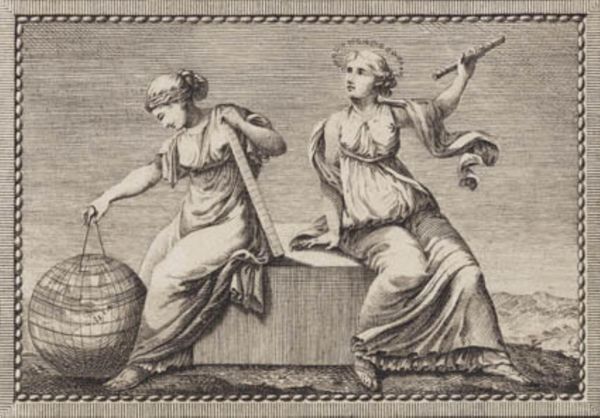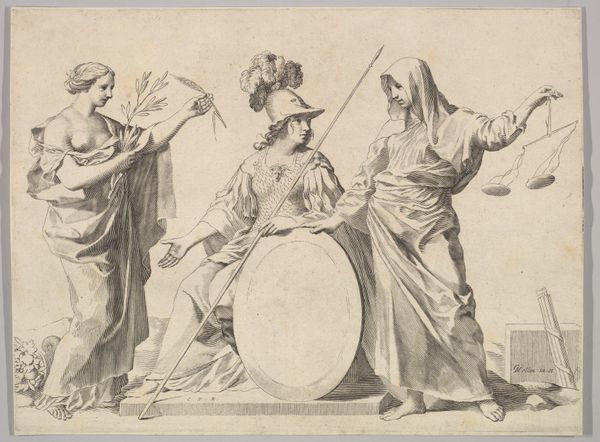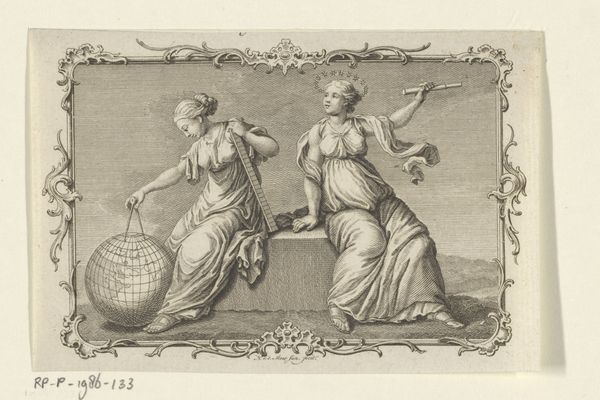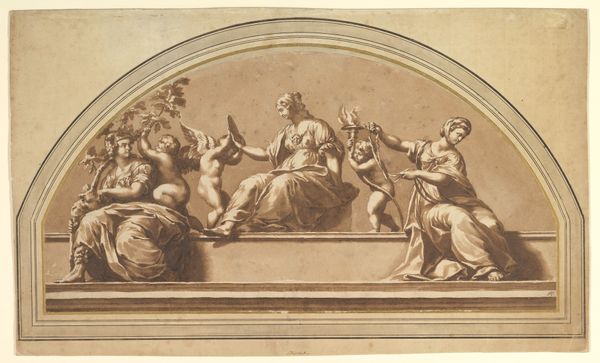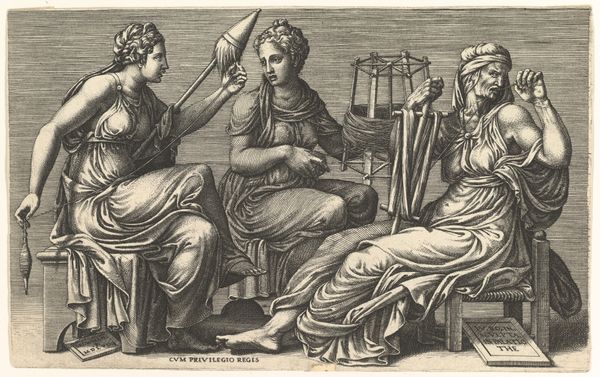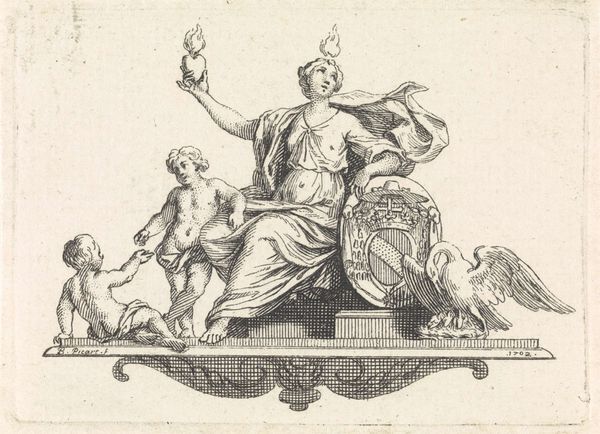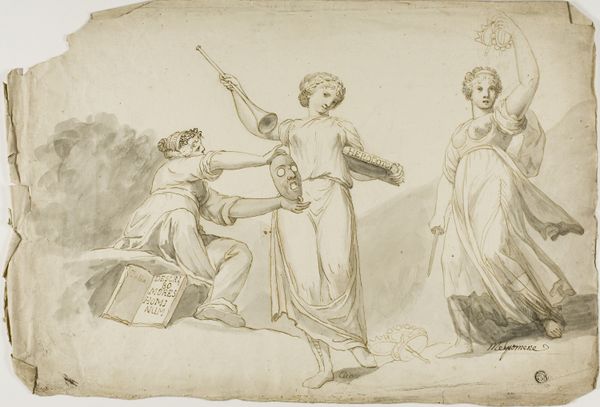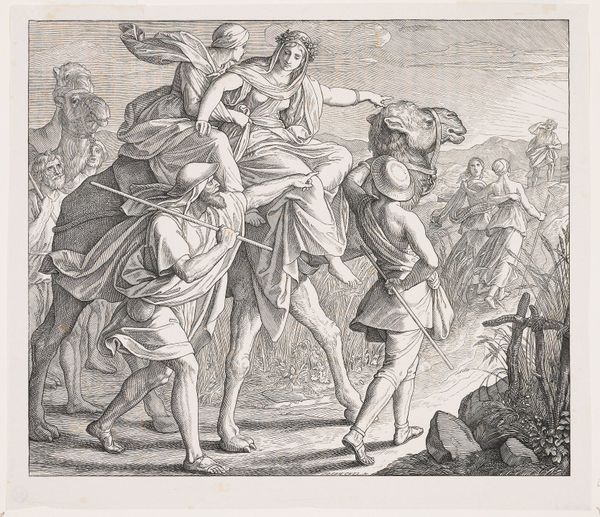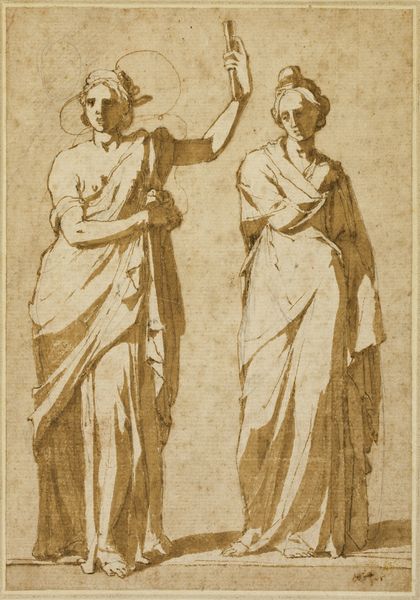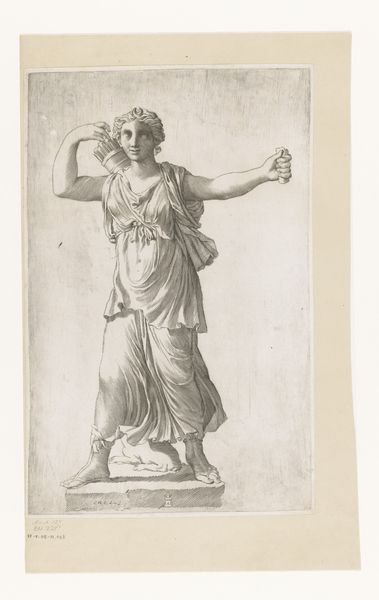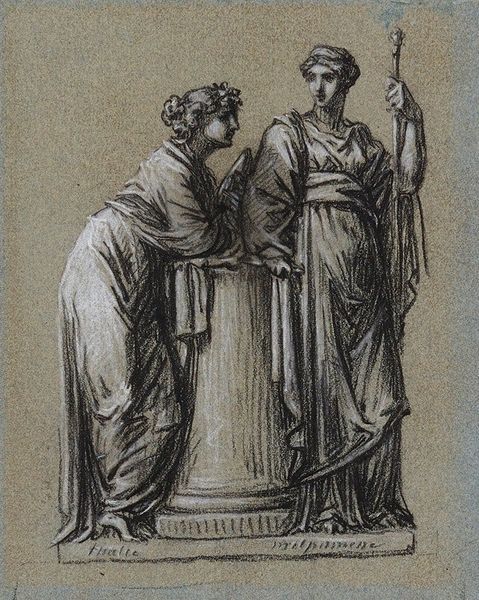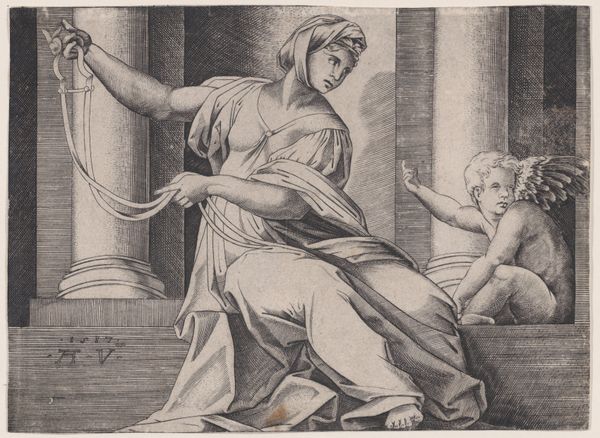
Dimensions: 83 mm (height) x 119 mm (width) (billedmaal)
Editor: This engraving from 1771-72 by J.F. Clemens, titled *Urania og Gæa sidder på en firkantet stenblok,* features two classically draped figures, one with a globe and compass, the other holding a telescope. I'm struck by how these symbols of knowledge and exploration are presented through an allegorical lens. What story do you think this piece is trying to tell? Curator: It's a fascinating encapsulation of Enlightenment ideals. Consider the historical context: the late 18th century was a period of burgeoning scientific inquiry, alongside powerful aristocratic institutions. The print blends Neoclassical style, idealizing ancient Greece and Rome, with Baroque dynamism in the flowing robes. Given that it's housed in the Statens Museum for Kunst, it was clearly intended for a relatively public consumption. Who do you think the audience was, and what messages might they have taken away from this imagery? Editor: Well, being a print, perhaps a wider audience beyond the wealthy elites. I imagine it was to make a statement on how scientific advancements can shape public perceptions about institutions and their places in the world. Curator: Precisely. The figures, Urania and Gæa, representing astronomy and Earth, highlight a societal investment in these disciplines. The imagery connects progress in mapping the globe and cosmos with idealized female forms, symbolizing knowledge itself. The placement in a public collection implicates the museum as a vehicle for the state’s support for, and validation of, this intellectual pursuit. Does understanding the potential historical context influence your initial perception? Editor: Definitely. Seeing it as more than just a decorative engraving but rather a reflection of societal values at the time makes me appreciate its complexity. Thanks for shedding light on it! Curator: My pleasure. Reflecting on these dynamics helps us understand how artistic production operates in conjunction with public institutions and broader cultural forces.
Comments
No comments
Be the first to comment and join the conversation on the ultimate creative platform.
